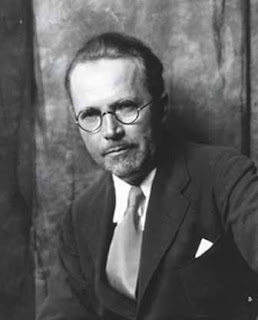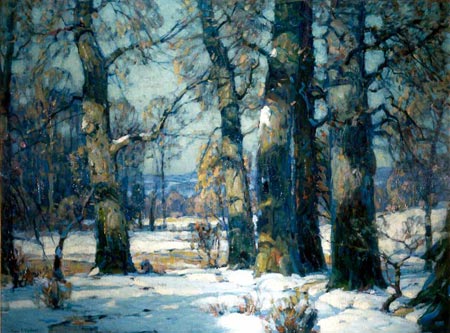 |
| John F. Carlson (Peter A. Juley & Son Collection, Smithsonian American Art Museum, J0001344.) |
Welcome these spring drizzles and chilly weather with a “Happy [belated] Birthday!” to Permanent Collection landscape painter, John F. Carlson (May 5, 1875–May 19, 1947). Carlson painted in the Impressionist style, and would have turned 137 years old this past Saturday! Carlson’s works, “Gray Woodland” and “Timberline Austerities” is currently up in the first floor 75th galleries. Both these works are from the 1920s, during his time as a Broadmoor Art Academy instructor, showing Carlson’s great interest in outdoor, wintertime paintings.
Carlson said, “The eye and soul are caressed in the contemplation of form and colour. The subtle changes of color over a surface — transitions that are like music — are intangible in their reaction upon us. There is an immediate sensuous appeal!” Although not considered an American Impressionist, he was heavily influenced by the painterly brushwork of the style.
When Carlson was nine years old, he and his family moved from Sweden to Buffalo, NY in 1884. He won a scholarship to study with Lovell Birge Harrison at the Byrdcliffe Art Colony in Woodstock, New York. He exhibited at the Art Institute of Chicago — these experiences in the early 1900s developed his interest in landscape painting.
Carlson had become such a force in landscape painting that he released Carlson’s Guide to Landscape Painting in 1973, which is still in print.


